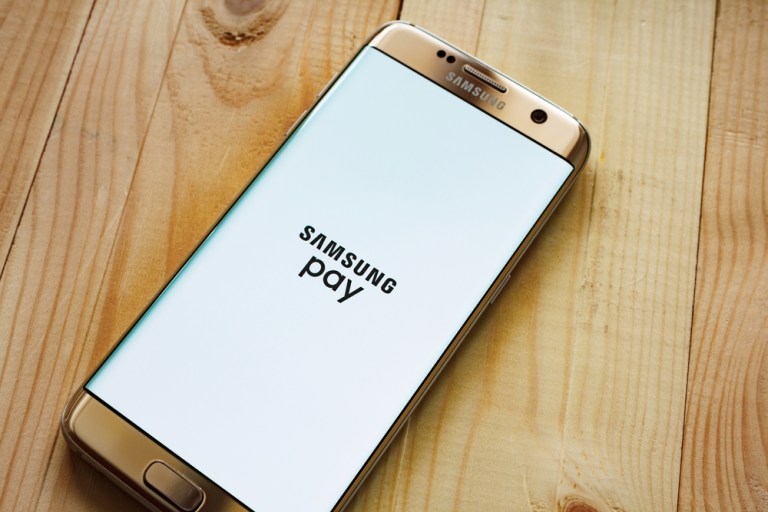Brick-and-mortar retail has spent the last decade building bridges to the digital world so a new generation of digital consumers can move fluidly between them. What’s been largely left behind, however, is a payments experience that moves just as seamlessly between those worlds.
There have been many attempts to bridge the gap, but consumers haven’t really taken the bait.
Using NFC mobile wallets in stores has seen lackluster adoption despite their slick and convenient user experience. Digital wallets are only as convenient as they are useful, and as a form factor substitute for plastic cards, consumers don’t feel they’re much of either. The lack of ubiquitous acceptance, coupled with the lack of utility, has kept consumers from making the NFC mobile wallet a major part of their in-store payments experience.
The omnichannel economy may be starting to change this, giving digital wallets a higher order of purpose in the physical store. The opportunity is a holistic payment solution across all shopping channels — online, mobile and brick-and-mortar retail — that eliminates uncertainty of usage and offers retailers and consumers more value than simply completing a transaction.
Sang Ahn, VP and general manager of Samsung Pay U.S., Samsung Pay Inc., tells PYMNTS that this is Samsung Pay’s vision — not only with its own mobile wallet (which uses both NFC and backward-compatible MST technologies), but also with strategic partners as it unlocks these omnichannel opportunities. This was the spirit of the partnership that Samsung Pay struck with PayPal last July, and that today goes live to select users in the United States.
Starting today, PayPal customers can now add PayPal as an option in the Samsung Pay wallet and use it at a physical merchant almost anywhere in the U.S.
Advertisement: Scroll to Continue
PayPal users who link their PayPal accounts to Samsung Pay will receive a virtual account with a $5.00 balance that can be funded using a network-branded debit card, bank account or their PayPal balance to pay at those brick-and-mortar merchants. PayPal users will receive Samsung Rewards each time they make a transaction. Samsung Rewards gives users points based on spend that can be redeemed for gift cards or items for purchase in the Samsung online store. At launch, users can also earn 1,500 Samsung rewards points.
“I’ve said many times that the best way for retailers to meet consumers in the digital world is to choose the path they’ve already walked and worn down,” said PayPal Vice President Jim Magats. “The ability to use PayPal at all of the places they shop online — and now all of the places they shop offline — is the embodiment of our choice and partnership strategies. This is a real win for the consumer, the merchant and the financial institutions whose cards they are using to fund their virtual PayPal accounts.”
The challenge of digital payments is giving consumers a very good reason to break their old payments habits. That’s why both Magats and Ahn said that embedding Samsung Rewards into the launch of PayPal in-store was important for both Samsung Pay and PayPal. This helps drive adoption and consistent usage by rewarding the consumer for using Samsung Pay and PayPal at their favorite merchants.
PayPal is accepted at more than 70 percent of the online retailers that drive more than 70 percent of non-Amazon eCommerce volume.
More Ways to Pay On and Offline
Samsung Pay has always believed that merchants, and not just consumers, must be at the helm of digital wallet adoption. From pharmacies and convenience stores to quick-service restaurants and cafes to specialty retail, all merchants are fertile ground for implementing a wider variety of payment methods into everyday commerce experiences. The more merchants that do so, the more consumers will follow.
“Since its launch three years ago, Samsung [Pay] has continued to forge new partnerships across the financial services industry,” said Ahn. “With every new partner, Samsung Pay users get more choice and flexibility in how they make payments while leveraging Samsung technologies and capabilities. That’s why we’re so excited to expand our strategic partnership with PayPal to give users yet another great payment option to choose from.”
PayPal, Magats said, sees a real opening for consumers to more easily use their PayPal accounts in-store to bolster efforts for the retailer to know who’s walking into their storefronts so they can engage with the consumers at a deeper level.
Advancing the Digital Wallet
In addition to deploying in-house capabilities, Samsung seems open to partnering on solutions that are a win-win for consumers.
“The largest and most successful digital-only merchants who’ve entered the brick-and-mortar world in order to grow their business, the largest and most successful digital wallets, see physical retail as an important part of their growth strategy too,” said Ahn. “Brick-and-mortar [retail] is relevant not only because it’s a physical channel where a large majority of spend still happens, but also because it is critical for delivering an omnichannel experience for the consumer.”
Magats said PayPal’s partnership with Samsung Pay is an important step in the journey for merchants and consumers. What’s clear though, he observed, is that the digital wallet space — at the ripe old age of four — is already being reinvented through the combination of software and services — and payments — to provide a richer experience for both merchants and consumers.
It’s a space, Ahn said, that will continue to innovate for the benefit of consumers. Over time, he said, you can expect Samsung to combine Samsung Pay, Bixby (voice AI) and shopping capabilities to deliver contextual and compelling experiences that benefit consumers online and offline.




